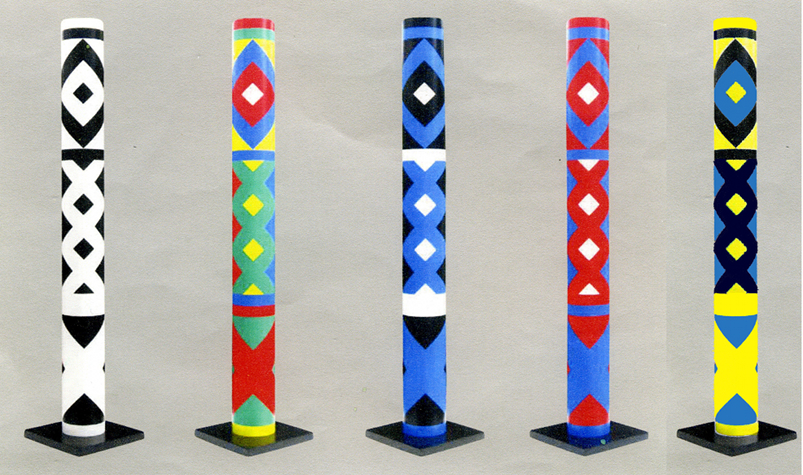Biographical Data
Born in Paris, in 1935. He lives and works in his hometown. Guy de Rougemont studies decorative arts at l’École Nationale Supérieure des Arts Décoratifs in Paris (1954-1958). His first individual exhibition takes place in 1962. During the events of May 1968 he organizes, together with Éric Seydoux, the Atelier Populaire at the École des Beaux-arts in Paris, this workshop allows the creation of serigraph posters. Guy de Rougemont becomes a member of the Académie des Beaux-Arts in 2002.
Brief Chronology
Since the early 60’s, Guy de Rougemont has thought of cities as jungles and has tried to create, through his interventions, ways to “penetrate”. He wants to make “his art work create a resonance with its surroundings”. He works on large canvases, mural paintings, creates environments, gives color to different spaces, sculpts; his work is always abstract, baroque and colorful. In 1971 he begins experimenting with “the color of space around the volume”, he creates polychrome cylinders, a “foundation of colors”. Following this same principle, he gives color, in 1974, to the colonnade in the Musée d’art moderne de la Ville and to the colonnade in the Palais de Tokyo; he envelops them with lacquered PVC. He works in monumental interventions. He designs city squares (Totem, Villeurbanne, 1981), fountains (Fontaine monumentale, in four-colored marble, Belfort, 1986), atriums (Musée d’Orsay, Paris; floor of the Ministère des Finances, Bercy, Paris, 1986-1989), expressways (Environnement pour une autoroute, 30 km of the East expressway in France, 1977), private and public buildings (Cent images, Nanterre, 1997). He also designs furniture, objects, carpet decorative motifs, stained-glass windows. He works on porcelain, he creates ceramics, stamps and posters. He has also made films (La tasse, 1966; Les trois comparses, 1969; Environnement pour une autoroute, 1977).
P.L.T.
www.academie-des-beaux-arts.fr
www.galeriedupassage.com
www.baudoin-lebon.com
